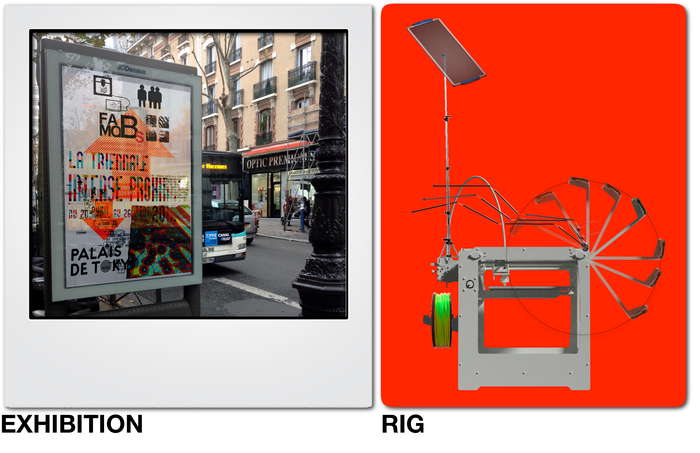While many may have just heard about it for the first time, Mike wrote about FABMOB and their ATMOStag project back in March, when the architect duo behind the project, Jamil Mehdaoui and Brad Kligerman, first announced it. The project is about as conceptual as it gets: use smart city sensors to connect an Ultimaker Original to the atmosphere of a particular location and let the atmospheric data determine the shape of a 3D printed object, called an ATMOSTag. Now, the duo is turning to crowd-funding platform Kickstarter to further spread the 3D printing of atmospheric data to raise awareness about the potential of smart city technology.
Kligerman explains more about the project: “FABMOBs | ATMOStag is an extension of the work that we have been doing for over 15 years as artists and architects. We challenge long held assumptions about architecture, space and technology by building with immaterials—atmospheres, weather, radio waves, digital media—to transform the physical world.” To take part in this global artistic venture, people and educational institutions around the world are offered to pitch in to create a giant installation made up of 512 ATMOSTags. Altogether, the tags will collectively describe the atmosphere around the area of a small lake in rural France, as shown in the introductory video below.
Support options include the option to purchase one or several ATMOStag models to print locally and participate in the global project. Funding the project with $3,000 will get you the ATMOStag_RIG hardware, which includes an Ultimaker Original 3D printer and all of the accompanying sensors, as well as the software and network connectivity used to capture, process, and print the ATMOStag_TILEs. Each RIG will also come with the ATMOStag_BOOK, the how-to for Creative Content Fabrication.
“We’re asking the Kickstarter community to help us put the FABMOBs platform to the test,” Kligerman explains, “by capturing a lot of DATA, generating many MODELS and printing massive amounts of OBJECTS in a controlled amount of time. The intended goal of this test is to reveal the platform’s strengths and weaknesses before its public roll out.”
The use of 3D printing as a powerful and physical visualization media for otherwise ethereal data, such as the sound of a voice or music has been a primary focus of many artists. Albeit, the practical applications of such endeavors are still somewhat limited to educational and experimental arenas. In fact, materializing otherwise ethereal data is exactly what artists do, and there is little doubt in my mind that a physical medium such as 3D printing can help the rest of us better visualize these concepts as well.




